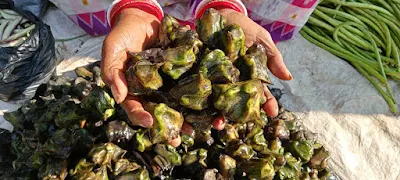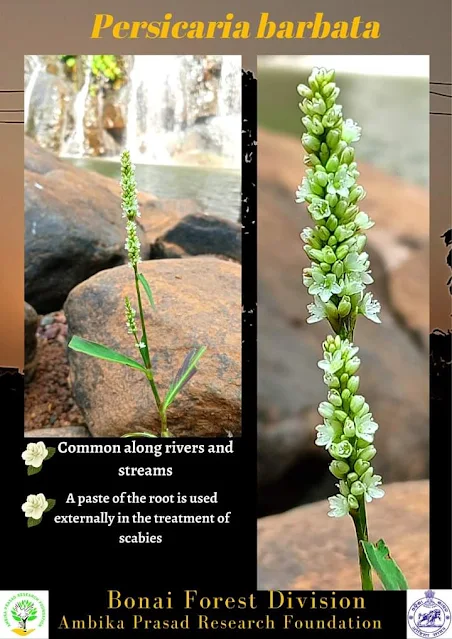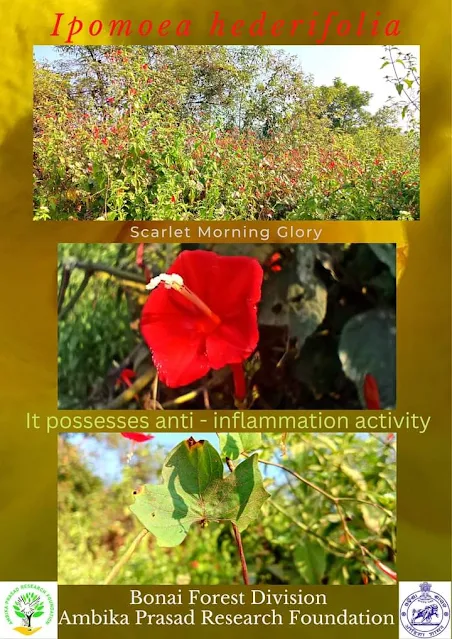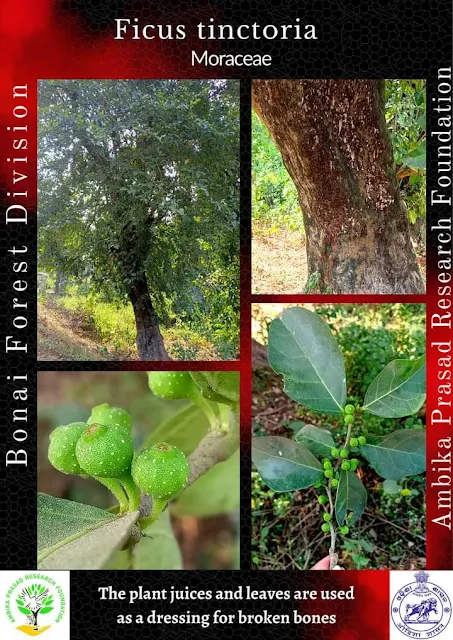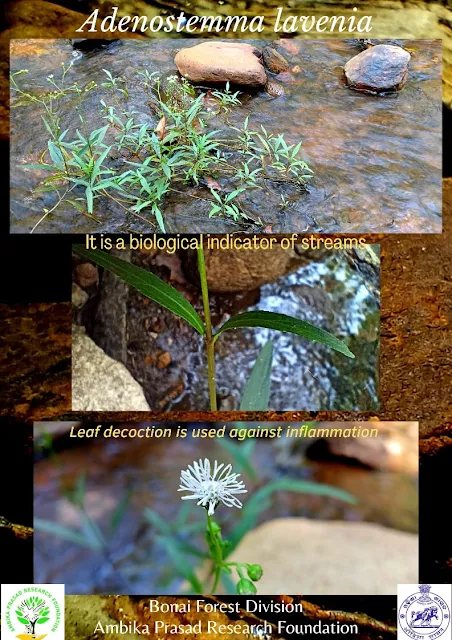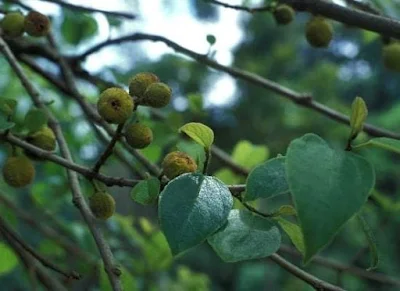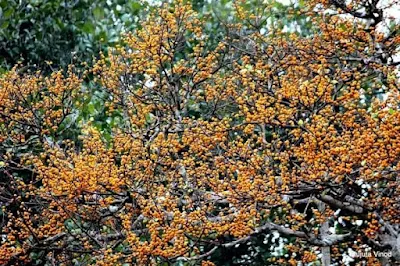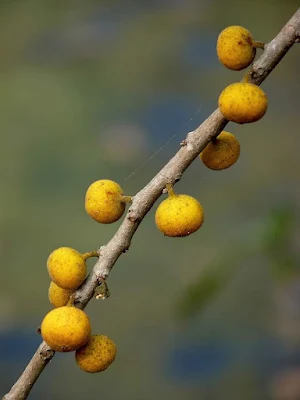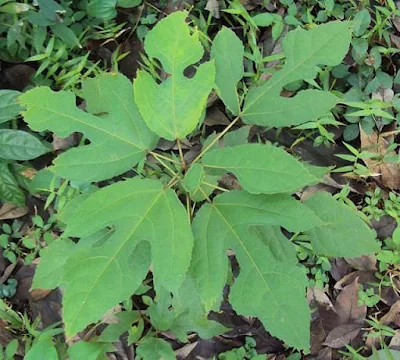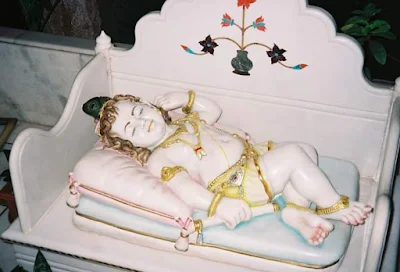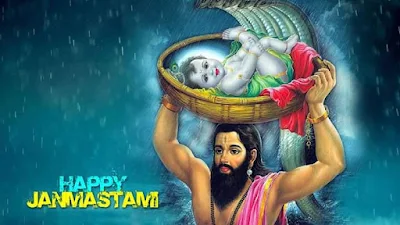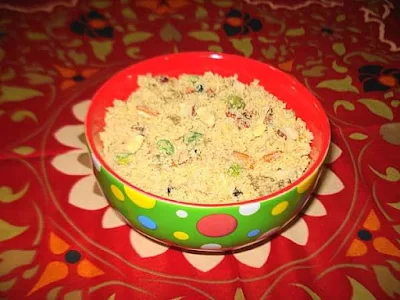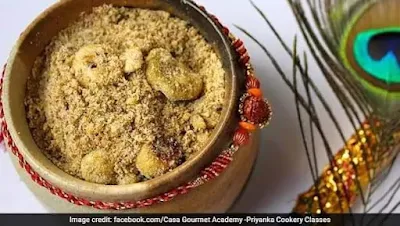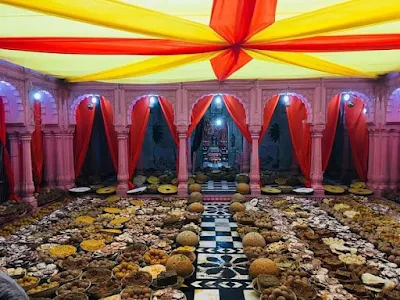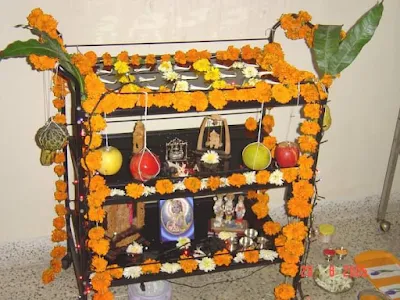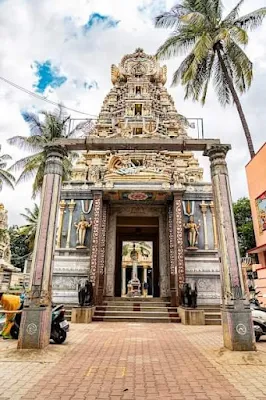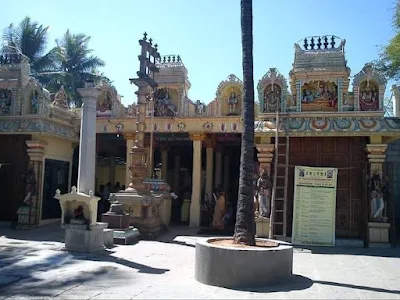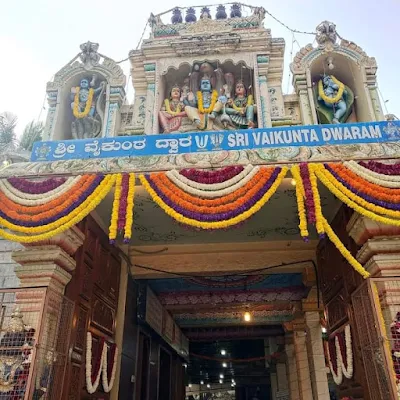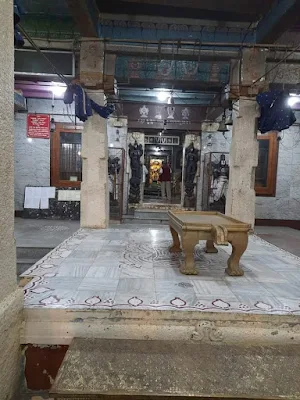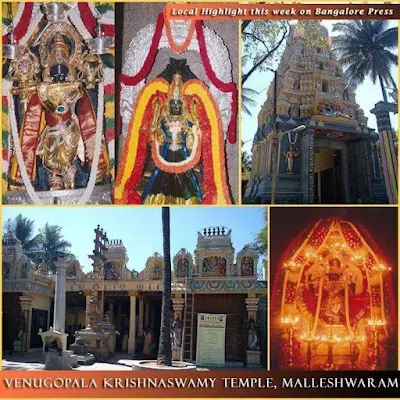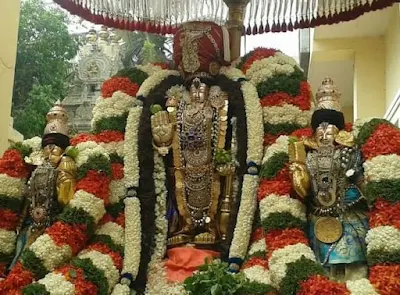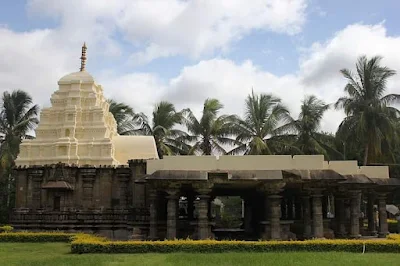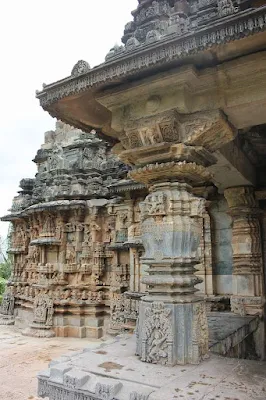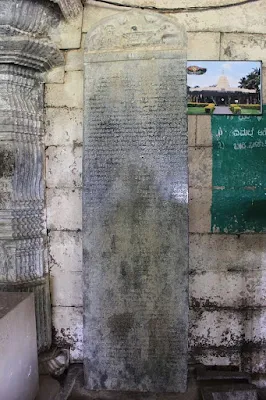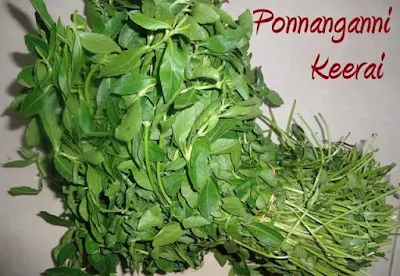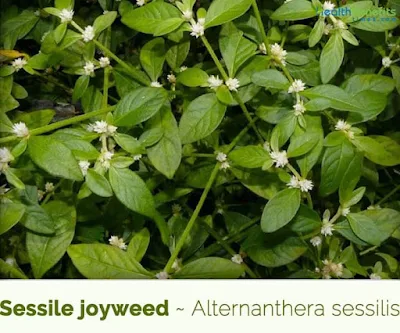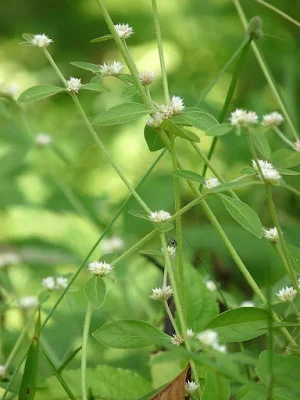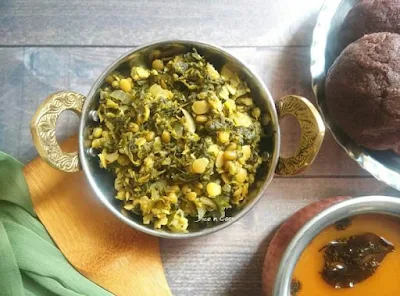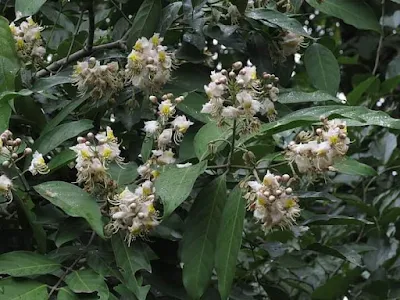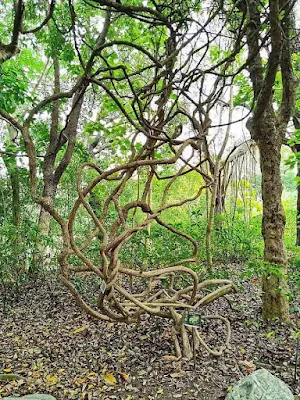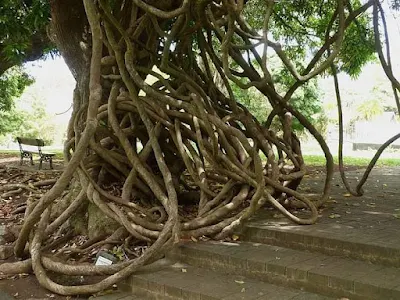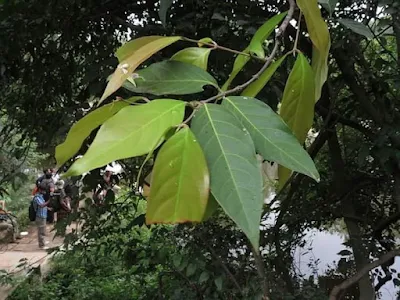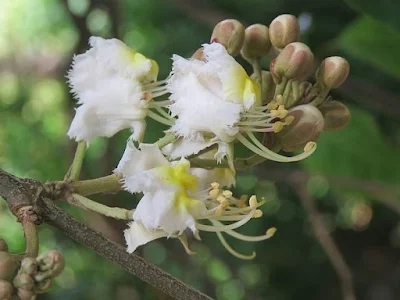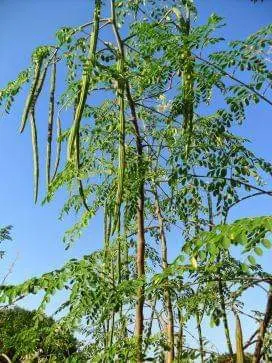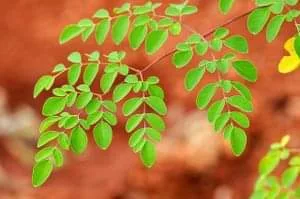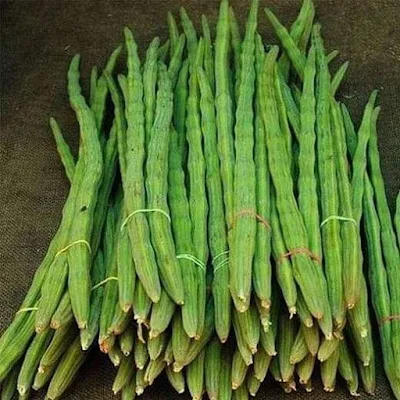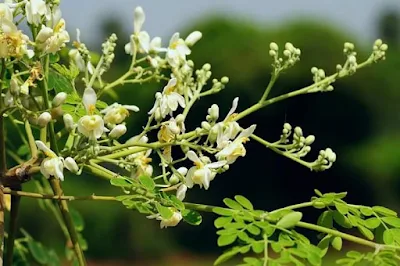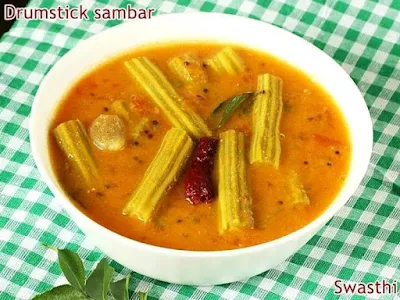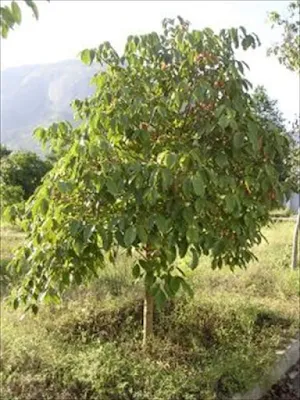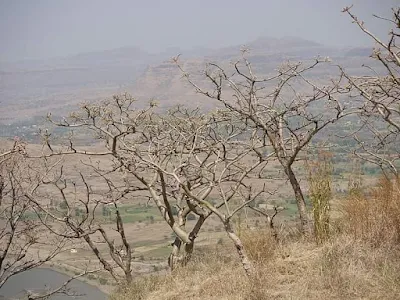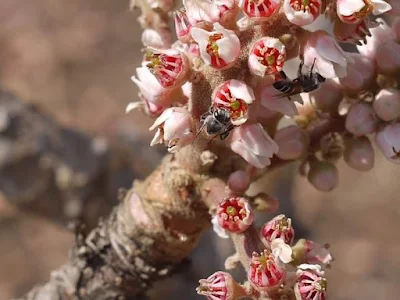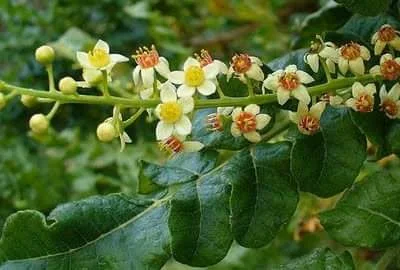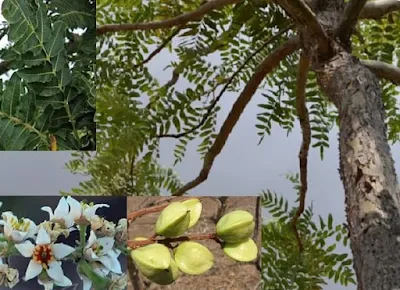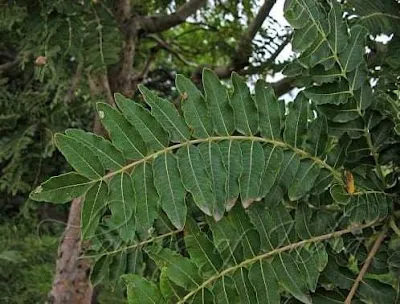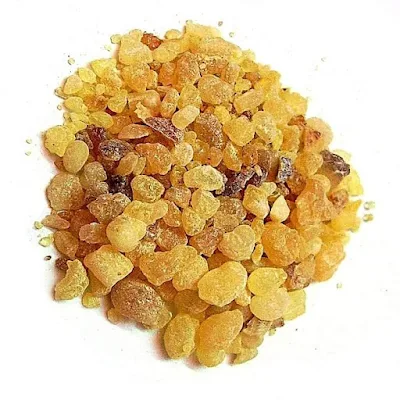Ayurveda , Doctor , Treatment , Medicine , Pure Herbs ,Yoga , Meditation... ...Rejuvenate yourself with Ayurveda and Yoga
Sandpaper tree | Did you know that Sandpaper tree's leaves with silica content are widely used as a source of sandpaper to smooth wood and calabashes, and to impart the last fine-grade polish to ivory apart from use in folk medicine?
Sandpaper tree
Did you know that Sandpaper tree's leaves with silica content are widely used as a source of sandpaper to smooth wood and calabashes, and to impart the last fine-grade polish to ivory apart from use in folk medicine?
The Sandpaper tree known by the scientific names Ficus exasperate and Ficus asperifolia is widely known as forest sandpaper fig, white fig, or sandpaper leaf or as Siamese rough bush. It is a deciduous and dipciuos species of plant, densely branched, in the Mulberry family Moraceae, native to Southern India (moslty on the Western Ghats and Eastern Ghats); Sri Lanka; Southeast Asia; tropical Africa from Senegal to Ethiopia to Angola; and in the Arabian countries such as Yemen. The tree's highly textured leaf surface gives it the name as the "sandpaper tree".
Sandpaper tree is a small to medium sized tree in Banyan group of figs. growing to 18 to 20 m metres. It is a middle-sized tree, semi ever green; bark pale grey or whitish becoming rough with age. It is an evergreen to semi-evergreen grows in forests up to 900 m to 1200 m elevation. Its young branchlets terete are seen with stout white scabrid hairs. Its leaves with milky white latex, dark green, hairless when mature but harshly rough on both sides ; margins minutely toothed, apex pointly, and base frequently asymmetric. Flowers (blooming and fruiting in February-April) are unisexual, pink, purplish or yellow, become orange or yellow, becomes orange or red at maturity, small and inconspicuous; male and female bloom on separate trees. Fruit is a small pea sized berry, pale yellow to orange when ripe, pulp sweet and edible. Its seeds are known to be dispersed by termites , who drag them into their nests, where they germinate. Besides sexual reproduction, the tree may grow with vegetative means propogated by seed and cutting. The latex of Ficus exasperata, usually watery and profuse, , are found mainly in the stem portions. Its leaves contains silica and thus used to smooth wood and calabashes. Its leaves are also used to impart the last fine-grade polish to ivory.
It is known by several synonyms such as Ficus asperrima Roxb, Ficus punctifera Warb, Ficus scabra Willd, Ficus serrata Forssk, Ficus silicea Sim. Its vernacular names in India are: Gargatti Aalada Mara,
ಅಡವಿ ಅತ್ತಿ Adavi Atti, ಗರಗತ್ತಿ Garagatti in Kannada; Parakam or
Therakam in Malayalam; Karvat करवत in Marathi; करपत्र Karapatra in Sanskrit; Irambarattam or Maramthinni Atthi in Tamil; Karaka Boddu కరక బొద్దు or Karasana or Siri Bodda in Telugu. It is also called Brahma's Banyan.
There is an interesting foklore of its use as a folk medicine which says that the sandpaper tree, with its rough leaves is sought after when a woman gives birth. It is said that her husband walks into the bush and gathers a root of the sandpaper tree. Once he has found the tree he walks back in direct line to his house and on the way, finds a dead tree, from which he cuts piece of root. When the husband gets back home, he burns the live sandpaper tree roots together with the dead tree root, collects the ashes, stirs it into a glass of water, and gives the concotion to his wife to drink, This potion is believed to ensure that the afterbirth (the placenta and fetal membranes discharged from the uterus after the birth of offspring) comes away and there is no infection.
Sandpaper tree leaves are used as a valuable medicinal plant in Indian medicine, Ayurveda. Leafy shoot is taken for the treatment of dysentery, edema, applied against jaundice or drunk as a diuritic. Leaves are used as antisepctic, analgesic, anti inflammatory, gastrointenstinal protective, oxtocis, nematicidal, hypotensive, antipyretic, for cough, venereal diseases; a maceration of the leaf is taken as an oxytocis for epilepsy and convulsions. It is said to be poisonous to goats and sheep, or harmful to cattle. In its native countries Exasperata leaves are used in traditional medicine by preparing a decoction (liquid) prepared by soaking the leaves in water, boiling and straining them.
Ficus exasperata has been used to provide shade in plantations and is planted as an avenue shade tree.
- Narasipur Char
Panjiri | Did you know that Panjiri, a sweet dish of Punjab origin, considered a powerhouse of nutrition, is one the 'chappan bhog' offered to Lord Krishna on this Krishnjanmashtami day?
Panjiri
In a popular arrangement, particularly in Iyengar households, one of each item of sweet and savoury dishes and fruits is tied to a piece of string and hung from a low ceiling frame in front of the altar (called Palavatsaram) specially set up for worship that night with a cradle. pictures, and small statues of baby Krishna.
Did you know that Panjiri, a sweet dish of Punjab origin, considered a powerhouse of nutrition, is one the 'chappan bhog' offered to Lord Krishna on this Krishnjanmashtami day?
Panjiri, one of the quintessential delights of Krishna Janmashtami bhog, is an offering to Lord Krishna, the eighth avatar of Lord Vishnu, on the occasion of his birth anniversary. According to Hindu legends, in the Lunar calendar, Lord Krishna was born in Shravana month on midnight of the eighth day of Krishna Paksha. Hindus celebrate the birth of Lord Krishna with great fervour by observing fasts and performing puja rituals. A variety of naivedyam or prasad is prepared on Krishna Janmashtami to be offered to the lord. Panjiri, however, is considered the most popular sweet among the "Chappan bhog" (56 sweet and savoury dishes) offered to the lord.
Panjiri, a staple sweet dish from the Punjab region, is treated as a nutritional supplement. It is made from whole-wheat flour fried in sugar and ghee, heavily laced with dried fruits and herbal gums. It has been used in a ritualistic and meaningful way as ‘falahari’ dish, for thousands of years, by the ancient Hindus as an offering to Lord Krishna on his Janamshatami day (birth anniversary day) and then many centuries later by the Sikhs. Panjiri is served with ‘Charnamrit’ (a holy drink that is offered at the end of Hindu prayer in temples), which is a sweetened drink made with yoghurt, coconut, powdered sugar, makhane etc. Sliced bananas are also added to this prasad.
Many types of Panjiri are prepared to be relished during religious festivities such as the traditional Panjiri, Gondh Panjiri, dry fruits Panjiri, Dhaniya Panjiri and Nariyal Panjiri. The base ingredients are similar, and the recipe only needs a little bit of tweaking to end up with different versions of this tasty dish. Apart from its extensive use as bhog to Lord Krishna, Panjiri is also used as a daily beverage for breakfast with hot sugary milk during winter season in Punjabi households.
The ingredients for this popular dry mixture of Panjiri, for a serving of four people, consists of: 12-14 cashew nuts and almonds; 1 cup of whole wheat flour (aata); a cup of castor sugar; 4 tablespoons of castor sugar; four table spoons of clarified butter; 10-12 raisins; 7 to 8 lotus seeds; 2 teaspoons of desiccated coconut; 1 teaspoon of sesame seeds;1/2 teaspoon of flax seed; 1/2 tea spoon of fennel seed; and 1/2 teaspoon of charoli seeds. The procedure to make it is simple involving roasting wheat flour for about 10 minutes to deep brown colour, then mixing it with 4 tablespoons of clarified butter (ghee), and followed by mixing with separately dry roasted mixture of cut cashew nuts, almonds, sesame seeds, flax seeds, fennel seeds, charoli seeds and coconut powder. This dry roasted mixture is then cooked for about 7 to 8 minutes. Then castor sugar is added to it and mixed well. Finally i the mixture is garnished with raisins and served or stored in a water tight jar for use as required.
However, in some parts of South India, particularly by the Srivaishnava Iyengar community and Madhva brahmins in Karnataka, and also in Kerala, Krishna Janmashtami is popularly known as Ashtami Rohini or Gokulashtami, and is observed based almost a month later on 10 September 2020. On this occasion also, apart from religious pujas, bhog or prasad of a large number of sweet and savoury dishes are offered to Lord Krishna at the midnight hour of his birth; of these dishes Thambittu, and roasted gram sweet ladoo are the most popular.
In a popular arrangement, particularly in Iyengar households, one of each item of sweet and savoury dishes and fruits is tied to a piece of string and hung from a low ceiling frame in front of the altar (called Palavatsaram) specially set up for worship that night with a cradle. pictures, and small statues of baby Krishna.
- Narasipur Char
Sri Venugopalaswamy Temple, Malleshwara, Bengaluru | Did you know that Sri Venugopalaswamy Temple in Malleshwara in Bengaluru, though built in 1902, is reckoned ancient as it is deified with the Moola Vigraha of Lord Krishna playing the flute which had been earlier consecrated in or before 997 AD at Tirukadaluru in Tamilnadu?
Sri Venugopalaswamy Temple, Malleshwara, Bengaluru
Did you know that Sri Venugopalaswamy Temple in Malleshwara in Bengaluru, though built in 1902, is reckoned ancient as it is deified with the Moola Vigraha of Lord Krishna playing the flute which had been earlier consecrated in or before 997 AD at Tirukadaluru in Tamilnadu?
Sri Venugopalaswamy Temple, popularly known as "Krishnar Kovil", is located in the predominantly Srivaishnava suburb of Malleshwaram, also spelled Malleshwara (ಮಲ್ಲೇಶ್ವರ), which developed as a suburb in 1892 in Bengaluru after a plague epidemic. The temple structure as such was the result of the efforts of prominent residents of Malleshwara, who in 1902 AD sought the help of then queen, Maharani Kempa Nanjammani Vani Vilasa Sannidhana of Mysore Kingdom; she was the queen regent following the untimely death of Chamaraja Wodeyar X, as their son Krishnaraja Wodeyar was a minor until 1902 . The queen readily agreed to not only partly fund (seed money) the building of the Vishnu Temple with a generous donation of 3,750 varahas (the then unit of currency of the Mysore Kingdom) but also decided to shift many of the ancient (of 10th century vintage or even going back to Chola reign) Vigrahas (iconic idols ) including the Moola Vigraha of Lord Krishna playing the flute which were then housed in the Mysore palace or in some other temple locations.
Following the patronage provided by the regent queen of the Wadiyar Kingdom of Mysore, the enlightened public personages of Malleshwara (such as Shetlur Venkataranga Iyengar, Professor M T Narayana Iyengar, Rao Bahadur Narasimhacharya, M T Narasimha Iyengar and Vidwan Asuri Anandalvar Swamy and others) also raised a large sum of 11, 794 varahas to build the Vishnu Temple at a site selected for the purpose; the site measured 140' East to West and 250' North to South between 11th cross on the northern side and 10th cross on the southern side of the Malleshwara suburb of Bangalore (now Bengaluru). It was initially thought to deify Nambinarayan as the Mulavar deity (Principal Idol) but during the construction stage, it was changed to Lord Sri Venugopalaswamy. This change is attributed to a patron who was ordained by God in a dream to install Venugopalaswamy or Lord Krishna playing the flute as the main deity. This Archa Moola Vigraha gave this 20th century temple its ancient vintage charachter dated to 997 AD as originally it belonged to a ruined temple in Thirukudallur in Tamil Nadu and is believed to have been worshipped even during the Chola rule in the 9th century. It is said that in 1829 this deity had reached the Mysore kingdom. In 1902, with the help of an officer of the palace, Sri Srikantharaje Urs, the Queen regent of Mysore, the Maharani, approved its transfer to this temple.
With the completion of the establishment of the main temple, with the Garba Griha deified with the Archa Vigraha of Venugopala swamy, the formal consecration (Pratishtapane or Kumbaabhishekam) of all deities was done on August 22, 1902, on an auspicious day of Bahula Tritiya of Shravana Maasa (Simha maasa) of Shubha Kritha naama samvatsara, Uttarabhadra nakshatra as per the Hindu calendar; the presiding deity of Lord Krishna, standing to about a metre height, is seen holding flute in his both hands, with his left leg on the peetha (pedestal). On the same day, the Vigraha of Lord Hanuman facing east, was also consecrated in an adjoining shrine. This day also happened to be the crowning (Pattabisheka) day of the Maharaja Nalvadi Krishnaraja Wodeyar.
The temple complex, established in accordance with Pancharaatra Agama and Vedic principles, has a plethora of Vigrahas deified in its garba griha (sanctum sanctorum) and other various sannidhis (shrines). These vigrahas, apart from the Moola Vigraha of Venugopalaswamy, Krishna playing the flute in the garba griha, are: Sri Nambinarayana, also said to be of 10th century vintage; Utsava-murtis of Venugopala Krishnaswamy with His Ubyanachiyars (Consorts) Sridevi, Bhudevi; Sri Veera Anjaneyaswamy vigraha moved from a small shrine in Narayana Katte (Sanyasi Katte), Periya tayar deity (Goddess Mahalakshmi); the Thayar (Principal Goddess) deity with chaturbhuja, abhayahasta and padmahasta was earlier receiving regular pooja at an old temple in Terukanambi in Gundlupet; the Shathari was brought from Tirunarayanapura (Melukote) where it had been consecrated. In recent times sannidhis for Rukmini, Andal (consecrated in 1946) Rama - Lakshmana - Sita with Anjaneya have also been built within the complex. Also housed in the temple complex are icons of Tirumangai Alwar, Sri Vedanta Deshikar, Manavala Mamuni, all consecrated in 1980. The deity of Sudarshana Alwar was consecrated in the late eighties, and that of Navaneeta Krishna also known as Ambegalu Krishna or Laddu Gopala was consecrated in 2005.
The temple complex standing out shining as a beautiful monumental structure built in the Vijayanagara architectural style of Hampi, covers an area of about 0.8 acres; it was built under the direction of R Narasimhachar, who was then the Director of Archaeology department with the Government of Mysore. It has an impressive five-tiered entrance Rajagopura at the center flanked on either side by a compound wall topped by Stucco images of gods and goddesses. This is followed by Mukha Mandapa, chatur dwara, veda stambha or the Dwajasthambha with Garuda shrine, and Vasantamandapa and garba griha. The garba griha is topped by a Vimana Gopura. In particular is the Darpana Mandapam (a hall of mirrors), a hexagonally shaped hall where during Shayanotsava (where the Lord rests on Adisesha in a sleeping posture) the devotees are delighted to witness an all endearing sight with more than 275 reflections of the Utsava Murthy, visible due to the mirrors.
The Temple worship here is a rigorous daily practice both during morning/day and evening/night in specfied hours, following the Pancharatra Agama shastra dictums. Brahmotsava is a grand festival held for ten days during the month of March which culminates in a grand Ratha yatra (car festival). Other important festivals celebrated here are Rama Navami, Vaikuntha Ekadashi, Oonjal Utsava (Jhulan Utsava), Krishna Janmashtami, Garuda Utsava, etc. There are about 250 major and minor festivals celebrated every year at this temple.
- Narasipur Char
Kalleshvara Temple, Ambali | Did you know that the Kalleshvara Temple in Ambali in Bellary district of Karnataka, a black stone Chalukyan temple of 11thc century is dedicated to Kalleshwara, a form of Lord Shiva.?
Kalleshvara Temple, Ambali
Did you know that the Kalleshvara Temple in Ambali in Bellary district of Karnataka, a black stone Chalukyan temple of 11thc century is dedicated to Kalleshwara, a form of Lord Shiva.?
The Kalleshvara Temple in Ambali is in the Bellary district of Karnataka. An inscritpion the sabamnadapa (assembly hall) of the temple, dated 1063 AD ascribes the temple to the 50 years reign of the Western Chalukya Empire's King Vikramaditya VI (also called Tribhuvana Malla).
The temple, is an ancient Chalukyan temple dedicated to Kalleshwara, originally consisted of a single shrine , opening into a mantapa of crucifom plan in the architectural style of the trans-Tungabhadra branch of the Lakkundi school, related to Kuruvatti (Mallikarjuna temple) with some non-mainstream affinities. The temple is dedicated to Kalleshwara, a form of Shiva Linga or Lord Shiva, as related to a story narrated to the Skandapurana. The temple was built in soap stone but as the original vimana tower was lost or ruined a new superstructure has been built over the shrine's garbagriha.
The Kalleshvara Temple, as it exists today with a newly built Vimana tower (Eka Kuta), faces east and comprises a sanctum (garbhagriha), an antechamber (or vestibule or antarala whose tower is called the sukhanasi) that connects the sanctum to a gathering hall (sabhamantapa) which is preceded by a main hall (mukhamantapa). The walls of the shrine and the sabhamantapa are articulated with projections and recesses creating niches which carry miniature decorative tower or turrets (Aedicula) in vesara style (a fusion of south and north Indian styles). The doorjamb of the sanctum and antechamber are crafted with decorative motifs, and the lintel (lalata) depicts Gajalakshmi (the Hindu goddess Lakshmi flanked by elephants on either side). The square bases of pillars in the sabhamantapa and mukhamantapa have the characteristic decoration with reliefs, depicting various Hindu deities such as Surya (the sun god), Bhairava (a version of the god Shiva) and Durga.
This temple, a protected as a monument of national importance by the Archaeological Survey of India, is to the west of Kottur and about 28 km. from Kudligi and near the junction of the three taluks of Hadagalli , Harapanahalli and Kudligi, and is 120km away from district headquarter Bellary.
- Narasipur Char
Sessile Joyweed or Honagone Soppu | Did you know that Sessile Joyweed or Honagone Soppu, a prized greens, in pink and maroon colours, is a non-toxic plant used as vegetable and in salads. and also as a herbal medicine?
Sessile Joyweed or Honagone Soppu
Did you know that Sessile Joyweed or Honagone Soppu, a prized greens, in pink and maroon colours, is a non-toxic plant used as vegetable and in salads. and also as a herbal medicine?
Sessile Joyweed or Honagone Soppu in Kannada language, with botanical name Alternanthera sessilis in the family of Amaranthaceae, which is one of 16 tropical and subtropical species, is an aquatic plant, a common annual but greatly prized in India as greens. It is a non-toxic plant used as vegetable and in salads and as a medicinal herb in folk and Ayurvedic medicine.
The plant which grows throughout the warmer parts of India, preferably in wet places especially around tanks and ponds, is known in Indian languages as Honagone Soppu in Kannada, Ponnanganni Kerai in Tamil, Ponnaganti koora in Telugu, Koypa in Marathi, Matikaduri in Assamese, Peannaaṅaṇi in Malayalam, Sanchesak in Bengali, Gudari Saag in Hindi, and as Matsyaakshi Matsyagandha, Bahli, Matsyaduni, Gandali, Gartkalambuka, Lonika in Sanskrit; called Matsyakshi in Sanskrit as its flowers appear like eyes of a fish.
Sessile Joyweed plant grows not only wild but is also cultivated for food, rises to a maximum height of 5 in inches, and its foliage is much larger and appears to spread closer to the ground. Its colours are pink and maroon. It is a' drought enduring plant on account of its perennating habit with the portion of the stem lying underground and flowering in sessile spikes, bract and bracteoles shiny white (flowering from December until March). The young shoots contain, as main constituents, five percent protein and 16.7 mg (per 100 g) iron. Leaves also contain a good amount of alpha- and beta-tocopherols.
The plant is bitter, sweet, constipating and cooling in action. In Ayurvedic medicine it is used for its diuretic, cooling, tonic and laxative properties, as a remedy against intestinal cramps and as a cooling medicinal hair oil as hair wash. It is also used to treat snake bites. The leaves are used to prepare Kohl or Kajal (kannu kappu mai); fresh leaves are applied over eyes for styes (Inflammation of one or more sebaceous glands of an eyelid), conjunctivitis and chronic inflammation of the eyelid. It is also said to be an excellent bee forage plant. As a folk remedy, juice of its leaves mixed with garlic clove, is used for asthma, chronic cough, and intermittent fever.
In culinary use, Sessile Joyweed or Honagone Soppu saru or rasam or basaru is a popular dish in many parts of South India and is served with rice or ragi mudde (balls) or chapathi. As a stir fry or palya with green gram, it is a tasty south Indian cuisine. In Sri Lanka, the plants are shredded finely and stir fried with grated coconut and spices to make what is known as "Mukunuwenna mellum".
- Narasipur Char
ADVANCE MEDITATION PROGRAM & SAHAJ SAMADHI PROGRAM With SWAMI VAISHAMPAYAM JI in Palava
*ADVANCE MEDITATION PROGRAM & SAHAJ SAMADHI PROGRAM With SWAMI VAISHAMPAYAM JI in Palava*
_*Advance Course leads one to a Space of INNER SILENCE*_
*which*
⚡ *Is charged with ENERGY*
🧘🏻♂ *Provides the deepest REST*
🎨 *Brings out our CREATIVITY*
🎭 *Is the ONLY source of INTUITION*
*~Experience The Deep Hollow & Empty Meditations* 🧘🏻♀️🧘🏻♀️
*~Learn Advanced Pranayams & Mudras* 🧘🏻♀️🧘🏻♀️
*ADVANCE COURSE TIME* : 6am-9pm
*SAHAJ time*:6.30pm- 8 pm
*Dates of AMC* : 1st to 4th Dec 2022
*Dates of SAHAJ*:
1st to 3rd Dec 2022
*🏡Venue*- JNB , at the bank of Nilje lake, Palava City.
*Accommodation available on request*
👉 *Eligibility* :
*AMC* - Happiness program / YLTP
*SAHAJ* : No prerequisite (16 yrs +)
*Registration link*-
*ADVANCE MEDITATION PROGRAM*- http://aolt.in/662011
4500 rs only
*SAHAJ SAMADHI PROGRAM*- http://aolt.in/666287
2500 rs only
*Happy to help* 😀 -
Jayesh - 96195 98890
Shikha - 79771 92143
Sudipta - 98364 57577
Anita -97699 66173
Hiptage benghalensis (Madhavi lata) As a folk medicine, its leaves and bark, which are hot, acrid, bitter, insecticidal and vulnerary, are used (leaf paste) to treat skin diseases, to heal wounds, biliousness, Ulcers, and to treat cough (bark decoction), asthma and leprosy. Bark powder with honey is also useful in treatment of diabetes.
Hiptage benghalensis (Madhavi lata)
Did you know that Hiptage benghalensis, a herbal plant native to India, which in Hindu religious beliefs popularly known as Madhavi lata, clung to her lover and master Lord Krishna who symbolized the mango tree?
The Hiptage benghalensis, often simply called Hiptage, native to India (also native to South East Asia and the Philippines) as 'Madhavi lata' bearing attractive and fragrant flowers, has religious connotation in Hinduism linked to Lord Krishna's stories, is herbal plant with many uses in folk medicine.
Hiptage, a herbal plant, widely cultivated in the tropics, is stout, a woody high climber liana (vine) or large shrub,with fragrant yellow-white flowers and 3-winged wind dispersed seeds. Its leaves are lanceolate to ovate-lanceolate and approximately 20 cm (8 in) long,and 9 cm broad, ; petioles are up to 1 cm long. It has scandent branches upto 5 m high. Its flowers intermittently during the year, and produces fragrant flowers borne in compact ten to thrity flowered ailiiary racemes. The flowers are pink to white, with yellow marks. Fruits are samaras with three spreading, peppery oblanceolate to elliptic wings, 2-5 cm long and propogate via wind or by cuttings. It prefers climates ranging from warm temperate to tropical. it grows from sea level to 1,000 m. Hiptage is also cultivated for its scented flowers. The plant can be trimmed to form a small tree or shrub or can be trained as a vine. It is also occasionally cultivated for medicinal purposes in the alternative medicine practice Ayurveda.
Hiptage, is derived from the Greek hiptamai, which means "to fly" and refers its unique three-winged fruit known as "samara"which has three wings with the middle wing larger than the adjoining two wings, and is thus known in English as Helicopter Flower. "Benghalensis" is derived from the historic region of Bengal, where it is a native species. Hiptage. benghalensis, in the family of Malpighiaceae, has 21 species. Its important Phyto constituents are: Hiptagine, alkaloid, phenol, tannins, flavonoids, and steroids.
Popular in English usage simpl,y as Hiptage or Helicopter Flower, its vernacular names in India are: Bhramarotsava, Bhumimandapa, Madhavilata, Malati, Vasanti in Sanskrit; Madhabi lata or madhoi lata in Assamese; Adaraganjee hambu (vine), Vasnatha Dhoothi (ವಸಂತದೂತಿ) Madhavi Lathe (ಮಾಧವೀಲತೆ), Chandravalli (ಚಂದ್ರವಳ್ಳಿ) in Kannada; Madhumalati in Hindi; Chittilakody, Njarambodal, Pongapoo, Seethambu, Sitampu in Malyalam; Vasantakaala malligaim, Adigandi, Adimattam, Atikam, Atikamali, Atikamalikkoti in Tamil; Adavi puttangi, Athimutamu, Atimutamu, Bandi guriginja in Telugu; and Haladvel, Madhavlata, Madhumaalathi in Marathi.
In Hinduism's religious beliefs, the Madhavi lata is compared to a frail young beatiful woman who clings for support to her lord and master Krishna who is symbolised by the strong mango tree. Thus, In stories of Lord Krishna, Madhavi Latha is found everywhere in Brindavan, and craetes a wondeful atmposphere with its fragrances and the three coloured flowers. In ancient India's greatest poet and playwright Kalidasa's play Abhijanashakuntala (The Sign of Shakuntala), the heroine Shakuntala meets king Dushyanta and falls in love with her. Kanva rishi, Shakuntala's foster father was pleased that she had met man of her choice, had said: "He had for long, been loking for a handsome mango tree (referring obviously to Dushyanta) and that now he would give his Madavai Lata a.k.a. Sakuntala to him in marriage". According to Vishnu Purana, Madhavi (Goddess Lakshmi) is the wife of Vishnu as Madhava, and the plant is named after her. Symbolically, Madhavi Lata is the creeping vine and Vishnu is the tree round which she clings for support. The herbal plant's three coloured flower is one of the 21 type of flowers offered to Lord Ganesha during Puja.
As a folk medicine, its leaves and bark, which are hot, acrid, bitter, insecticidal and vulnerary, are used (leaf paste) to treat skin diseases, to heal wounds, biliousness, Ulcers, and to treat cough (bark decoction), asthma and leprosy. Bark powder with honey is also useful in treatment of diabetes.
- Narasipur Char
Moringa oleifera or Drumstick tree or Nuggekayee Did you know that Moringa oleifera is a name derived from the Tamil word Murungai Maram, drumstick tree whose ubiquitous leaves and young fruits (pods) are used as vegetables, particularly its long, slender, triangular seed-pods in sambar curry; and the seeds, bark, flowers, and roots as traditional herbal medicine?
Moringa oleifera or Drumstick tree or Nuggekayee
Did you know that Moringa oleifera is a name derived from the Tamil word Murungai Maram, drumstick tree whose ubiquitous leaves and young fruits (pods) are used as vegetables, particularly its long, slender, triangular seed-pods in sambar curry; and the seeds, bark, flowers, and roots as traditional herbal medicine?
Moringa oleifera, drumstick tree in English, derives its name from the Tamil language word Murungai Maram, Nuggekayee in Kannada language, Sahjan in Hindi, Shobhanjana or Sigru in Sanskrit, also known as horseradish tree, ben tree, is a small tree from Indian subcontinent whose pods, roots, bark, flowers, seeds, and fruits are all edible, and has also become a popular natural leaf powder supplement. It is a fast-growing, deciduous tree, drought-resistant, the most widely cultivated species in the Indian subcontinent of the genus Moringa, which is the only genus in the family Moringaceae. In particular, India accounts to an annual production of 1.2 million tonnes of pods and fruits from an area of 380 km2. It is valued mainly for its edible fruits, leaves, flowers, roots, and seed oil, and is used extensively in traditional medicine throughout its native and introduced ranges.
The Moringa tree usually grows up to 10 or 12 m in
height, has a spreading, open crown of drooping, fragile
branches, feathery foliage of tripinnate leaves, and thick,
corky, whitish bark. The leaves are bipinnate or more commonly tripinnate, up to 45 cm long, and are alternate and spirally arranged on the twigs. The fragrant, bisexual, yellowish white flowers are borne on slender, hairy stalks in spreading or drooping axillary clusters (panicles) 10–25 cm long.
The tree is mainly valued for its edible, tender pods,
which have a taste very similar to asparagus, and the immature seed pods, called "drumsticks" are widely used in the south Indian sambar curry. Its leaves known as Saijan Saag in North India, are highly nutritious. Once harvested and dried, they contain 30% protein, all essential amino acids. The leaves are also used in many ways, perhaps most commonly added to clear broth-based soups. The seeds, sometimes removed from more mature pods and eaten like peas or roasted like nuts, contain high levels of vitamin C and moderate amounts of B vitamins and dietary minerals. Mature seeds yield 38–40% edible oil called 'ben oil' from its high concentration of behenic acid. The refined oil is clear and odorless, and resists rancidity. Moringa seed cake, obtained as a byproduct of pressing seeds to obtain oil, is used to filter water using flocculation to produce potable water for animal or human consumption. It is also used as forage for livestock. Its flowers
are a good source of pollen for honeybees.
In the Indian subcontinent, in traditional Indian medicine, therapeutically, its leaves, flowers, pods and seeds are used to treat and prevent diseases such as diabetes, heart disease, anemia, arthritis, liver disease, and respiratory, skin, and digestive disorders. Its leaves, in particular rich in vitamin A and C, are considered useful in scurvy and respiratory ailments; they are also used as
an emetic. The juice extracted from the leaves has strong
antibacterial and antimalarial properties. A paste of the leaves is used as an external application to promote healing of wounds. The seed oil is applied externally to treat rheumatism and gout. Several
compounds of proven medicinal value have been isolated
from the roots, root bark, stem bark, and seed.
- Narasipur Char
Boswellia serrata - Shallaki Did you know that Boswellia serrata or Shallaki is a decidous plant that is native to India which produces the fragrant resin commonly known as Indian olibanum, Indian frankincense?
Boswellia serrata - Shallaki
Did you know that Boswellia serrata or Shallaki is a decidous plant that is native to India which produces the fragrant resin commonly known as Indian olibanum, Indian frankincense?
Boswellia serrata or Shallaki with Latin name Olibanum Indicum is a tropical dry deciduous forest plant that is native to India, and its fragrant resin is commonly known as: Indian olibanum, Indian frankincense. Frankincense is also known as the Biblical incense, an extract from the resin of the tree Boswellia sacra, and is now produced also from B. frereana. The medicinal uses of the gum-resin extracts of Boswellia serrata have been traditionally used in herbal folk medicine for centuries to treat various chronic inflammatory diseases. The Indian version of this herbal medicine popularly cited as the indigenous herb, is 'Salai Guggal', the herbal Artiritic pain reliever, that is said to be, besides being natural and safer, also more effective.
Boswellia serrata is named for John Boswell, Scottish botanist of Edinburgh, England, with 'serrata' spelled "sair-AY-tuh or ser-RAT-uh' meaning "toothed like a saw". It is a deciduous medium sized tree, a genus of trees in the order Sapindales, known for their fragrant resin. It can grow to a height up to 18 m and up to 2.4 m in girth. Its leaves are alternate, exstipulate, imparipinnate, 20-45 cm in length and are like neem plant with the flowers which are bisexual bloom in white color. It bears fruits, drupe type, about 12 cm long with 3 seeds ovoid, trigonous; pyrenes. The gum derived from its bark and its flowers and seeds are together known as Indian Francineus. It is usually grown in red, lateritic to rocky soils of dry deciduous forests and on dry sand stone ridges. It grows well in dry, hot exposures of rocky hills, with 50-125 cm rainfall and is propogated through seeds. The resin present in the bark of Boswellia tree is Shellaki, which is its main medicinal product. However, its intense use has become a non-sustainable practice in recent years that has created a risk of being eradicated.
A single tree is reported to yield one to two kilograms of gum in a year. The gum is extracted by removing a small patch of bark. The resin is fragrant, transparent and golden yellow and on drying brownish yellow. Gum-resin contains 30-60% resin, 5-10% essential oils (soluble in the organic solvents) and the rest is made up of polysaccharides. Resin solidifies slowly with time to reddish brown, greenish yellow, or dull yellow to orange in color.
Research studies of Boswellia serrata indicate various derivatives as boswellic acid including β-boswellic acid, acetyl-β-boswellic acid, 11-keto-β-boswellic acid and acetyl-11-keto-β-boswellic acid.
Apart from its English name of Boswellia serrata or Indian frankincense tree, Indian olibanum tree, the plant and its derived resin is known in Indian vernacualr langauges as : Shallaki (शल्लकी), Sallaki, Yakshadhupa, Salasiniryasam, Bhishan, and Bahusrava in Sanskrit and Hindi; Guggula mara ಗುಗ್ಗುಳ ಮರ Madi, Guggaladupa, Haalu maddi, chilakadupa, paramgi saambraani ಪರಮ್ಗಿ ಸಾಮ್ಬ್ರಾಣಿ in Kannada; Dhupamu, Guggilamu (గుగ్గిలము), Parangisambrani, Tellaguggilamu, Andugapisunu in Telugu; saaledi, સલાઈ ગૂગળ salaai gugul in Gujarathi; kungilyam കുങ്ങില്യം in Malayalam; loban ਲੋਬਾਣ in Punjabi; Kundurukkan, Kungiliyam குங்கிலியம், Kungli, Vellai kunkiliyam,vellai-k-kirai வெள்ளிக்கீரை in Tamil; and loban in Urdu.
In Indain folk medicine, this herbal plant has known uses of its extracts (clinically studied) for diabetes, osteoarthritis and joint function. Its use as Salai guggal, or Boswellia serrata is reported to work amazingly to reduce inflammation and relieve pain. Its use in any form is recommended in small doses to avoid any adverse effects.
- Narasipur Char
Subscribe to:
Posts (Atom)
Rejuvenate yourself with Ayurveda and Yoga Campaign
Rejuvenate yourself with Ayurveda and Yoga Campaign in
Mumbai, Delhi , Bangalore , Hyderabad , Ahmedabad , Chennai , Kolkata , Surat , Pune , Jaipur , Lucknow Kanpur , Nagpur , Indore , Thane , Maharashtra ,India , United States ,
Netherlands , France , Ukraine , Germany , Indonesia , Bulgaria , United Kingdom , Ireland , Russia , Canada , Singapore , China , Poland , Japan , South Korea , Brazil , Egypt , Portugal , Spain , Azerbaijan , Australia .
Popular Posts
-
Dr Aditi R Kulkarni M.D.Ayurved Mumbai Ayurved and Panchakarma Yog Therapy Consultant Gokul Nagari , Khadakpada K...
-
DR MAHESH D PATIL B.A.M.S.( MUMBAI) PG DIPLOMA NUTRITION ( DELHI ) CERTIFICATE IN PAEDIATRIC NUTRITION ( IAPEN MEMBER ) PG DIPLOM...
-
DR MAHESH M THAKUR B.A.M.S (MUMBAI) AYURVEDIYA CHIKITSALAYA, AND PANCHAKARMA KENDRA, JAY YASHODHAM , 1st FLOOR BELOW SAMATA HOSPIT...
-
Yoga Book Enlightenment _ what it is & Leave death alone
-
Meditation Yoga Chapter 6, Verse 20 yatroparamate cittaṁ niruddhaṁ yoga-sevayā yatra caivātmanā’tmānaṁ paśyann-ātmani tuṣyati When the mind...
-
Yoga Book Healing your Emotional Self - A Powerful Program to Help you Raise your Self-Esteem, Quiet your Inner Critic, and Ove...
-
Yoga Book Yoga Darshan Vision of the Yoga Upanishads by Swami Niranjanananda
-
Yoga Book 9 secrets of successful meditation _ the ultimate key to mindfulness, inner calm & joy
-
YOGINI AYURVED BHANDAR 1, BALAJI DARSHAN, CHEDDHA ROAD, BEHIND JOSHI HIGH SCHOOL, SARASWAT COLONY, DOMBIVLI EAST THANE INDIA ...
ॐ सर्वे भवन्तु सुखिनः
सर्वे सन्तु निरामयाः।
सर्वे भद्राणि पश्यन्तु मा कश्चिद्दुःखभाग्भवेत।
ॐ शान्तिः शान्तिः शान्तिः॥
सभी सुखी होवें,
सभी रोगमुक्त रहें,
सभी मंगलमय घटनाओं के साक्षी बनें और किसी को भी दुःख का भागी न बनना पड़े।
ॐ शांति शांति शांति॥
May all sentient beings be at peace,
may no one suffer from illness,
May all see what is auspicious, may no one suffer.
Om peace, peace, peace.
Disclaimer
The information at any place in this website is just an informative basis as well as pure intention to create Awareness about Ayurveda , Yoga and Meditation to encourage people to adopt Ayurveda , Yoga and Meditation in their day to day lifestyle for Natural health. All the content is purely educational in nature and should not be considered medical advice. Please use the content only consultation with appropriate certified Doctor or medical or healthcare professional. This site contains External Links to third party websites ,These links are being provided as a convenience and for informational purposes only; they do not constitute an endorsement or an approval and no responsibility for the accuracy, legality or content of the external site or for that of subsequent links. Contact the external site for answers to questions regarding its content.


